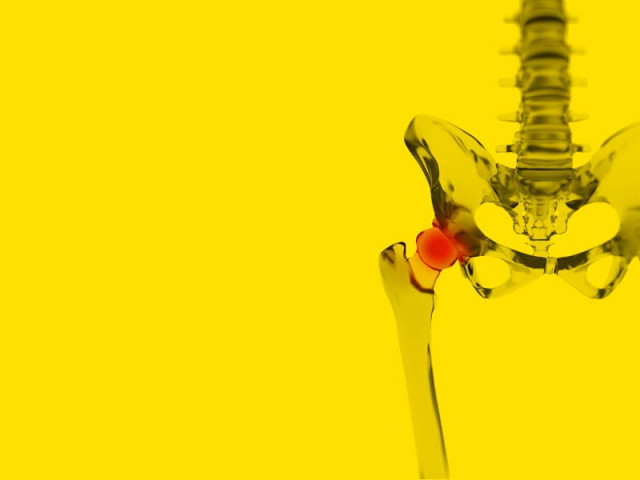
What is arthritis?
Few of us understand arthritis and the muscular degeneration it entails , let alone know how to prevent it. The word arthritis — derived from the Greek words ‘Artho’ and ‘Itis’ which mean joints and inflammation respectively — is an umbrella term for nearly a 100 medical conditions which affect the human muscular and skeletal system adversely. Therefore, in a nutshell, arthritis can be defined as inflammation of joints which results in pain, weakness, instability and bone deformities which interfere with our daily lives. Joint tissues cover the ends of bones and allow them to move against one another. When the tissues are inflamed or damaged, movement becomes problematic and painful. “Constant joint pain is the main complaint of patients suffering from arthritis,” says Dr Masud. “It is often constant and arises due to inflammation of or damage around the joints as well daily wear and tear. Muscle strain caused by forceful movements against stiff joints can also cause arthritic pain.”
The different forms of arthritis
While there are numerous forms of arthritis, the three most significant ones include osteoarthritis, rheumatoid arthritis and gout which — according to the National Rheumatology Society — account for more than 95% of arthritis cases worldwide; osteoarthritis is the most common form. The disorder normally occurs in people above 40 and is categorised as an ‘old age disease,’ occurring as a result of mechanical joint damage from previous injuries. General wear and tear, joint infections and patient age can also be contributing factors, depending on how advanced both are. “I was diagnosed with osteoarthritis back in 2009,” shares 36-year-old businessman Hasnat Sipra. “I was almost paralysed and bedridden. I couldn’t work, pray or do anything by myself!”
Rheumatoid arthritis, on the other hand, does not result from overuse or injuries. “Rather, it is a disease,” explains Dr Masud. “In this disorder, the fluid which lubricates our joints and allows flexibility becomes inflamed. The inflamed cells release enzymes which build up over time and digest the bone and cartilage.” Unlike osteoarthritis, rheumatoid arthritis usually affects the entire body of a patient and includes fatigue and fever, as well as joint pain.
According to a report published by Dr Parvez Rais Khan, an orthopaedic surgeon and chairman of the Bone Care Trauma Centre in Hyderabad, is common in people between 25 and 50 years of age and even children. In fact, now 36-year-old homemaker, Tahira Shamsi was diagnosed at just 21 years of age. “I experienced pains all over my body, right from the start,” she shares. “The doctors couldn’t believe my age when my scans showed almost no gap between my bones, due to the absence of fluids.” Although surgery seemed inevitable, Shamsi was not operated upon because she was too young.

Symptoms of arthritis
The National Rheumatology Society of Paksitan has issued a list of symptoms common to undiagnosed arthritis patients. These include:
• Morning stiffness
• Malaise and tiredness
• Weight loss
• Poor sleeping patterns
• Muscle and join aches
• Tenderness
• Muscle weakness
• Loss of flexibility
• Decreased aerobic fitness
• Inability to move hands or walk properly
• Difficulty in moving joints
Treatment options for arthritis patients
Since arthritis is a chronic condition, there is no absolute cure except prevention and care. Logically speaking, the only treatment is anything that can prevent the joints from swelling or promotes muscle movement. Physical therapy, for example, has been proven to improve bone function, decrease pain and delay the need for surgical intervention significantly. Regular exercises prescribed by doctors are particularly effective in counteracting osteoarthritis of the knees — even more so than medication. According to Dr Khan’s report, maintaining a normal weight can also reduce joint stress and delay the onset of osteoarthritis.
In general, medicinal treatment depends on the type of arthritis at hand and how advanced it might be. “For those who suffer from osteoarthritis, early treatment is key,” advises Dr Masud. “Painkillers can be administered to curtail the pain. Combinations of glucosamine chondrotin sulphate vitamins are also recommended.” Regardless, medicines can only reduce joint pain and do not help everyone. “Medicines didn’t help me much,” admits Shamsi. “I underwent many different medical experiments and even visited hakims but to no avail. Sometimes, the pain became so bad that I was bedridden for days.”
As in Shamsi’s case, rheumatoid arthritis is autoimmune which means that a patient’s immune system attacks and destroys healthy tissue along with unhealthy ones. “This is a disease and requires a specific treatment,” explains Dr Masud. “Ultimately, it leads to a joint replacement surgery.” Disease-modifying, anti-rheumatic drugs are administered, along with regular medication, as they work on the immune system and slow down the progression of the disease. Sadly, even these special drugs failed to help Shamsi, even though she was selected as part of a clinical trial by German and American doctors. “The other patients in the trial responded to the medicines immediately,” says Shamsi of her experience. “But my pain returned after a few days. Eventually, I found peace with allopathic medication and can now manage my life on my own.”
Laser therapy is another option arthritis patients can consider. Studies have proved it to be effective, resulting in zero joint pain and improved mobility. Orthopaedic bracing can also provide support to aching joints.
According to a research conducted by Dr Muhammad Ashraf Chaudhary, professor and head of the community medicine department at CMH Lahore Medical College, anti-inflammatory foods and a healthy lifestyle can be very beneficial for arthritic conditions. The report suggests that in order to curtail inflammation, patients ought to avoid consuming inflammatory food items. This includes foods high in saturated fats, such as red meats, butter, whole milk, cheese and rich desserts. Any type of food can aggravate rheumatoid arthritis so it is advisable for patients to eliminate all allergenic food items from their diet.
The type of treatment given is respective to each patient, depending on the type and scale of arthritis they suffer from. Shamsi may have had little luck with medical intervention but Sipra is good as new, post a hip surgery. “I no longer need any medication and can do my work on my own,” he says. Speaking about Sipra’s experience, Dr Masud explains that, “In the case of joint-eroding arthritis, joint-replacement surgeries like hip resurfacing and total hip and knee replacement are performed. This is done once all other options have failed.”
Preventing arthritis
Of course, prevention is always better than cure. While it is impossible to escape the effects of age, one can delay the onset of arthritis by undertaking some easy measures prescribed by doctors. One of the main ways is by exercising regularly and maintaining a healthy weight. Exercising not only keeps the muscles strong and active, it also boosts metabolism and relieves pain. It is also advisable to protect one’s joints during exercise as accidents, injuries or overuse may increase the risk of arthritis, especially after the age of 40. A variety of ankle, knee and other types of braces are available in the markets — these provide support to the bones and guard them. Foods rich in elements that strengthen bone marrow, such as calcium and iron, are essential for healthy bones and muscular function. One must also seek medical help immediately if any arthritis symptoms occur as the longer they wait, the worse the situation can get. Therefore, early diagnosis and timely treatment is key to coping with arthritis and its impending effects.
*Name has been changed to protect privacy.
Myths regarding arthritis
• It is widely believed that arthritis is a natural part of growing old — a consequence of age and its impending effects. However, many forms of arthritis can affect youngsters and even children. In fact, most people who are diagnosed with arthritis are still of working age upon diagnosis.
• Some doctors claim arthritis to be a metabolic disorder caused by stress, poor living conditions, faulty nutrition, emotional trauma, depression and a sedentary lifestyle, all of which break down basic bone function.
• Contrary to what we might have hoped, arthritis is as yet incurable. While the condition can be managed, it impacts each patient’s life differently and there is no all-in-one solution to it yet.
Published in The Express Tribune, Ms T, January 4th, 2015.

















COMMENTS
Comments are moderated and generally will be posted if they are on-topic and not abusive.
For more information, please see our Comments FAQ